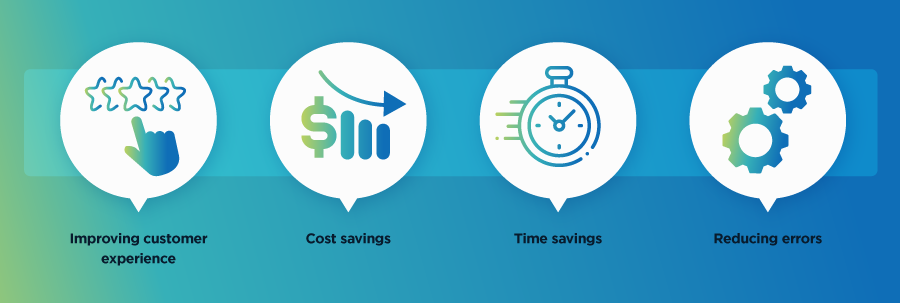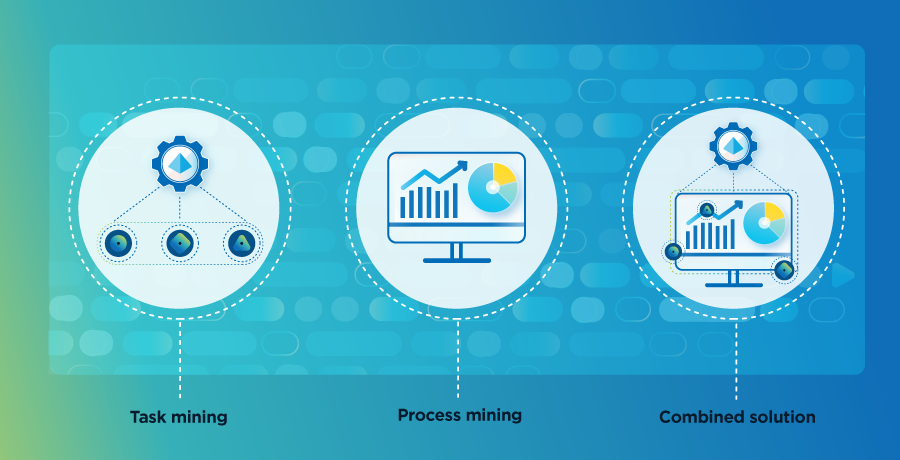How To Transform Work With Digital Solutions

There are continual advances in technology, and more organizations are looking at how the automation of business processes can spur their digital transformation initiatives.
Paper documents and tedious tasks that bore employees need to change. These manual, menial tasks are more error-prone and time-consuming, which negatively impacts customer experience and costs you resources and productivity.
Digital process automation software is one step many organizations are taking to take their traditional workflow into the digital realm.
What Is Digital Process Automation?
Digital process automation (DPA) uses its advanced capabilities to connect people, business applications, and systems across the entire organization using low-code development tools – meaning your business users don’t require technical expertise to create digital processes within your business workflows.
How is digital process automation different from intelligent automation?
While intelligent automation (IA) – also called business process automation (BPA) – automates processes by combining robotic process automation (RPA), artificial intelligence (AI), machine learning (ML), and business process management (BPM), DPA works after the processes have been optimized and focuses on making a better user experience for external users, such as customers and vendors. That can include:
- Mobile interfaces
- Automating customer tasks
- Triggered reminders
- Collecting data
- Process transparency for users
- Routing information
- Tracking activity
DPA is often considered the next evolution of business process management.
What Is BPM?
BPM is concerned with streamlining business processes and orchestrating workflows, with long-term goals of continuous improvement. It focuses on cost reduction and making your human employees more productive by reducing the number of repetitive tasks they have to perform. BPM also helps with resource allocation and has straight-through processing and application programming interface (API) integration, which lets information flow seamlessly between applications.
How’s that different from DPA?
DPA uses the same technologies as BPM, along with many of the same strategies, but DPA tends to offer more low-code or no-code development and consumer-focused experiences.
Can I combine BPM with DPA?
Absolutely you can – and we have. SS&C | Blue Prism® Chorus BPM allows you to rapidly build and automate complex processes, optimize your digital workflows, create digital customer experiences, and accelerate straight-through processing.
Here’s what you get with Chorus:
- Work orchestration
- Rules management
- Multi-experience communication
- Content management
- Role-based workspaces
- Operational analytics
Right now, it’s being used by 24 financial service enterprises, 18 insurance companies, 17 banks, and 14 health and pharma groups, helping them create better customer (and patient) journeys, accelerate their processing, and mitigate operational risks.
What’s Automation Software?
Essentially, automation software is the boat you take down the automation river. It’s your vehicle for deploying digital workers into your business processes. Intelligent automation is a type of automation software, just like there are DPA tools, and it combines robotic process automation (RPA) with AI and BPM to perform complex tasks.
- RPA is a digital technology that deploys software robots to perform simple tasks normally conducted by humans by following the automation rules given to them.
- AI is a cognitive technology that mimics human thinking and is the part of IA that can help automate complex business processes.
- BPM allows for process monitoring, optimizing, and orchestrating, providing a holistic approach to automation. Most BPM software has integration capabilities with traditional processes as well as digital processes, all from a single platform.
What’s a digital process automation software?
A DPA software like Chorus is going to get you total end-to-end intelligent process automation that you can scale across your business, connecting teams and departments. Breakdowns in communication are usually the first thing to go, and solving those slowdowns will increase your organization’s productivity monumentally.
Benefits Of DPA

Okay, so there are a ton of automation platforms out there. What are the benefits of digital process automation (DPA)? Why do you need it?
Improving customer experiences
At the end of the day, a better experience for customers means more money for your organization. It’s better brand loyalty and streamlined services. By optimizing those slow, error-prone processes and giving your customers the information they need right when they need it, you can completely transform your organization.
Cost savings
With more efficient processes and better-allocated resources, you’re going to significantly reduce costs for your business. You won’t have to duplicate efforts on erroneous tasks and go back to fix previous mistakes, which can also result in compliance breaches and potential fines for those enterprises in highly regulated fields.
Time savings
Implementing digital process automation platforms allows users to quickly develop efficient workflow automations to speed up those time-consuming manual steps. These digital tools, such as IA digital workers, run around the clock without breaks and faster than their human counterparts – getting accurate results faster for your business.
Reducing errors
Automated processes work so much better than manual processes. They follow the rules down to the letter. Manual tasks are error-prone because they’re time-consuming and tedious, and the average employee is bound to make mistakes. Sometimes, those mistakes cost money, whether that’s in resources or penalties. And when you use DPA, you’re making the user experience better. Customer expectations are high; they don’t want to see mistakes – they want to see immediate, quality results.
How Do I Identify Areas For Improvement?

It doesn’t matter how many advanced tools and fancy software you stuff into one system; if you want to realize the benefits of DPA, you need a strategic approach to process improvement. And that starts with identifying where automation will best help you, which is done with task mining and process mining.
- Task mining digs into the granular details of how a task is performed, from clicks, keystrokes, and copying and pasting. As a technology, task mining is usually run directly on a user’s desktop.
- Process mining uses event log data to accurately create process maps showing how specific processes are executed and compares them to how they should run. Process mining helps organizations understand their processes, monitor key performance indicators (KPIs), and identify potential problems early on.
- A combined solution, process intelligence puts task mining, process mining, and business intelligence metrics together to gain deeper insights into business processes. SS&C | Blue Prism® Process Intelligence does just that with business insights.
From there, you can begin automating processes, first with these quick wins, then by scaling your IA program across your organization. If you’re looking for a robust guide that will walk you step-by-step through strategizing, developing, deploying, and scaling your digital workforce, reference an operating model such as the SS&C | Blue Prism® Robotic Operating Model™ (ROM2).
How Do I Implement DPA?

Following an operating model is ideal, but here’s a quick checklist of what you should do before and during the automation of processes:
- Set a goal.
- Assess your current processes.
- Select your first automation candidates.
- Select your DPA solution.
- Implement training and change management for your teams.
- Design your automated processes.
- Integrate your DPA platform within your systems.
- Test and validate your automation before going live.
- Deploy your automation.
- Continuously monitor and improve your automation as it runs.
How Do I Use It?
DPA solutions exist across industries and departments. Let’s look at a few examples of digital process automation in organizations.
Customer onboarding
With customers being a top priority for DPA, transforming the customer onboarding experience is high on the list. It’s that initial ‘meet-cute’ of a customer with your business, and it’s imperative you make a good first impression. Efficient, accurate, and positive customer interactions and high-quality services can help ensure brand loyalty and business sharing.
Employee onboarding
From the moment a new hire starts their job, DPA ensures they have all the starter information and equipment they need, and your organization has all the employee’s data accurate and secure in its systems. As much as a customer’s first impression is important, so is a new hire’s. Streamlining those first few weeks will help you retain staff and ensure you get the best people for the job. This also reduces the burden on your human resources (HR) staff.
Approval processes
Let’s use account invoice processing as an example. DPA can help you automatically scan paper invoices into a centralized system, read the data, and input it into the correct forms, where it can then be routed to a manager or payee for approval – all without requiring a person. Invoicing is done faster, meaning payments aren’t late, and they’re less prone to error, which is better for compliance and auditability.
Back-office tasks
There are a lot of background processes perfectly suited to automation, but they’re often overlooked due to their ‘hidden’ quality. These seemingly simple processes hold a lot of potential to reduce work bottlenecks and free up your employees to work on higher-value initiatives.
DPA Software Features
In general, DPA software includes:
- Workflow automation
- Integration capabilities
- Low-code or no-code development
- Real-time monitoring
- Reporting and analytics
- Scalability
- Security and compliance
Determine what your business goals are and align your automation software to fit those needs. Intelligent automation, business process management, and digital process automation all aim to improve your business processes and transform employee and customer journeys.
Need help selecting the right automation solutions for your organization? Get started with SS&C Blue Prism.